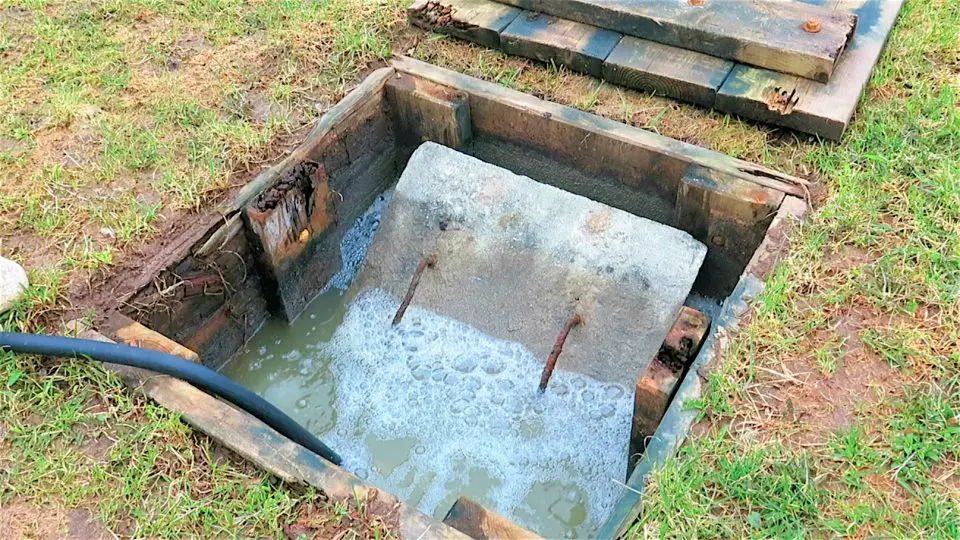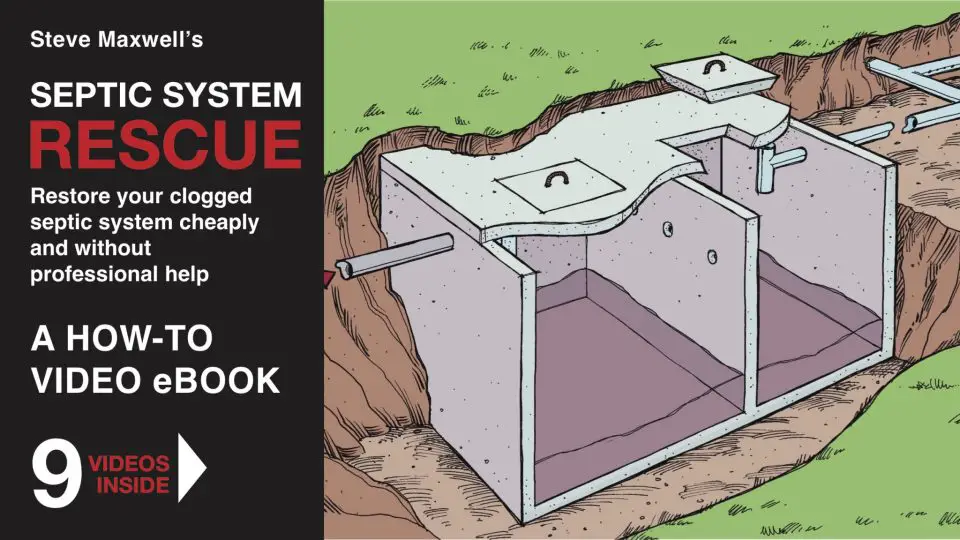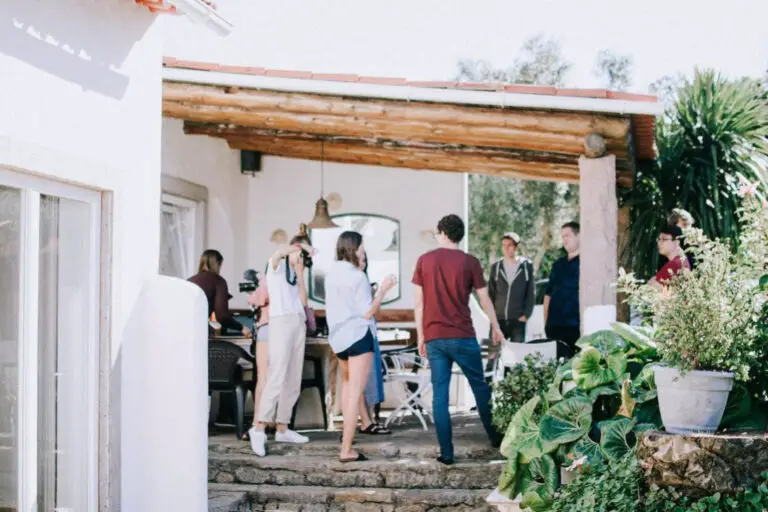
Q: How often should I have my septic tank pumped? I hear greatly varying recommendations and I don’t want to run into trouble.
A: There’s a good reason septic tanks need pumping out, and it’s widely misunderstoood. Pumping is necessary because not all the solids that enter the tank end up being liquified and discharged into the soil through the perforated leaching pipes. Slowly, over time, indigestible solids settle onto the bottom of the tank. The more the solids build up, the less the working capacity of the tank becomes, the less time for digestion of waste. Eventually, if the solids build up high enough, they’ll spill over into the next tank chamber, then ultimately into your leaching bed, plugging up the passages and causing sewage to back up like you see below. Not good.

So, how long between pump outs? That depends on the number of people in the house and the lifestyle of those people. My rule of thumb is to have a pump out done every two or three years no matter what. You can sometimes push it beyond this, but the risk isn’t worth it.
If Worse Comes to Worst
I once saw a septic tank that hadn’t been pumped after 8 years of heavy use, and sludge was about half way up the second tank chamber, which always must be kept completely free of solids. This system failed 5 years later, but was revived without replacement using a method I developed myself. I turned this approach into an online course called SEPTIC RESCUE.













